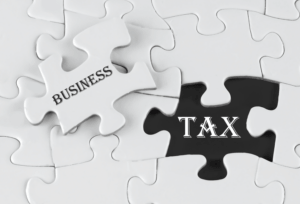
Charging after service delivery, known as billing in arrears, is a payment strategy where customers pay once they receive the full service. Rather than demanding payment in advance, businesses adopting this strategy ask for payment only after complete service delivery. For example, a plumber usually asks for payment after successfully fixing a pipe or faucet. However, this strategy can pose a challenge in terms of cash flow management.
Delinquency and your credit score.

And, you are a Airbnb Accounting and Bookkeeping customer when making business purchases from vendors. Don’t forget, that maintaining a strong relationship with your customers is key to the success of arrears billing. Arrears billing and advance billing represent two unique methods of charging clients. Check out the Billing Software Buyer’s Guide to learn how the right tools make billing in arrears easy for businesses of all sizes. For example, if your $500 loan payment is due on Jan. 15 and you miss the payment, you are in arrears for $500 as of the next business day. Unfortunately, this makes it easier for the small business but it can test the trust of your customers.
Why Do Companies Prefer Paying in Arrears?
Under “Billing Preferences,” enable the “Billing in Arrears” option. You can also click here to get a step-by-step tutorial with images. Once you’ve enabled the ability to invoice in arrears you’ll need to manage your billing schedules that bill in arrears. This tutorial walks you through the simple steps to billing in arrears.
What is billing in arrears and how can I reduce the risks?
This delay can be a challenge, especially for those who may not have a financial cushion. When it comes to processing payroll in arrears, using payroll software lets you set a payment schedule that works for your business. For example, if a workweek is Monday through Sunday and you pay employees every Friday, you’ll have to process payroll early.

You’ll choose to bill in arrears when usage varies month to month or rinal charges depend on actual consumption. Small businesses are constantly seeking innovative solutions to streamline operations and drive cost savings.
How to Bill in Arrears with PaySimple
Between upfront payments, installment plans for customers, and billing in arrears, the latter is the trickiest. But understanding how it works can make a big difference in keeping your operations running smoothly. It’s also common in contracting and other service-based businesses. Customers can hesitate to pay large bills for service in advance, so typically a business charges a percent upfront or requests a down payment.

Consider Togai, the Usage-based Metering and Billing Software, to cater your needs. Let’s take a closer look at practical examples within the business world. Many companies use the arrears payment system for their payroll. Instead of receiving pay at the beginning or during the period of work, employees receive their wages after they’ve completed their work cycle. This might be at the end of each week, bi-weekly, or monthly, depending on the company’s payroll policies. Paid in Arrears supports businesses in managing finances by ensuring that payments are made only for completed work.
- Your billing solution should be able to identify overdue invoices and schedule an immediate follow-up.
- For example, if a workweek is Monday through Sunday and you pay employees every Friday, you’ll have to process payroll early.
- Here are answers to a few frequently asked questions on this topic.
- Billed in arrears refers to when payment is released after services or goods have been provided, instead of beforehand.
- There might be times when regular payment is behind because it is overdue.
- This includes respecting the agreed-upon schedule of payments, even if they are disbursed in arrears.
- As we’ve mentioned above, your invoices will be more accurate and reflective of the work completed.
- When the bill becomes overdue—say 30 days past the due date for payment—the account falls into arrears and the account holder may get a late notice and/or penalty.
- They can now use the revenue gained from food sales to generate cash to pay the invoice.
- From time to time, you might be billed in arrears or make a payment in arrears.
- This can disrupt a business’s cash flow and leave an employee with a pay check made out to the wrong amount.
- The platform from FreshBooks makes it easy to automate payroll processing, reducing errors and cutting down on needless administrative work.
It only becomes a late payment if you fail to make the payment by your payment contract’s due date. Paying at the end of the period gives you time to secure financing, such as through sales or by processing accounts receivable, to pay your employees. When it comes to paying in arrears and payroll, using payroll software lets you set a payment schedule that works for your business. Not only will you be able to set payroll to run automatically, but you’ll also be bill in arrears meaning able to calculate and file payroll taxes, manage HR and employee benefits, and more. QuickBooks is your all-in-one solution for your accounting, payment, and payroll needs.
Industries that Use Arrears Billing
When invoices are billed in arrears, you’re essentially trusting the client to pay after you’ve rendered the service. This method builds online bookkeeping goodwill, as customers don’t have to pay until they’re satisfied with your work. A billing method where businesses invoice customers after providing services or delivering products for more accurate billing and improved customer satisfaction.

